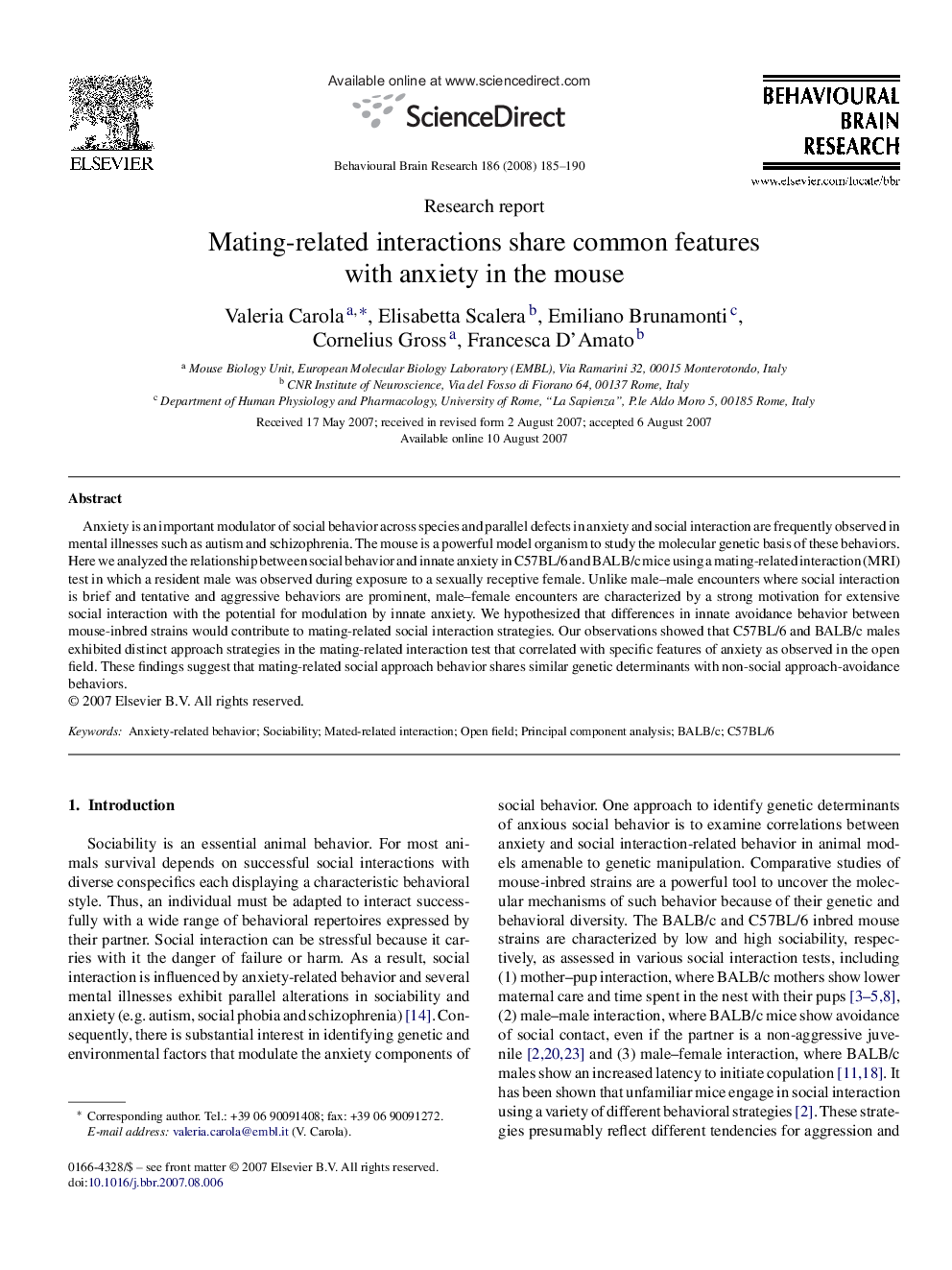| Article ID | Journal | Published Year | Pages | File Type |
|---|---|---|---|---|
| 4315458 | Behavioural Brain Research | 2008 | 6 Pages |
Anxiety is an important modulator of social behavior across species and parallel defects in anxiety and social interaction are frequently observed in mental illnesses such as autism and schizophrenia. The mouse is a powerful model organism to study the molecular genetic basis of these behaviors. Here we analyzed the relationship between social behavior and innate anxiety in C57BL/6 and BALB/c mice using a mating-related interaction (MRI) test in which a resident male was observed during exposure to a sexually receptive female. Unlike male–male encounters where social interaction is brief and tentative and aggressive behaviors are prominent, male–female encounters are characterized by a strong motivation for extensive social interaction with the potential for modulation by innate anxiety. We hypothesized that differences in innate avoidance behavior between mouse-inbred strains would contribute to mating-related social interaction strategies. Our observations showed that C57BL/6 and BALB/c males exhibited distinct approach strategies in the mating-related interaction test that correlated with specific features of anxiety as observed in the open field. These findings suggest that mating-related social approach behavior shares similar genetic determinants with non-social approach-avoidance behaviors.
